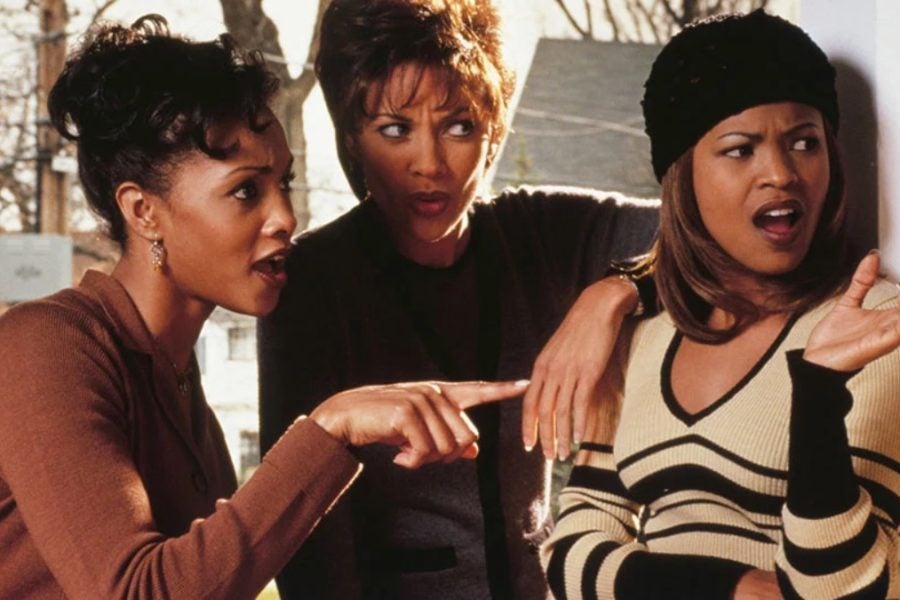
On August 4, 2022 Los Angeles was irrevocably changed when 37-year-old Nicole Linton, a traveling nurse working at Kaiser Permanente’s West Los Angeles Medical Center, was recorded driving down La Brea Boulevard at speeds of up to 130 mph, crashing into passing traffic at the busy intersection of La Brea and Slauson in a fiery wreck.
Linton emerged from the collision with relatively minor injuries, but five others died, including 23-year-old Asherey Ryan, Ryan’s boyfriend, Reynold Lester, and her 11-month-old child, Alonzo Quintero. Ryan was 8 ½ months pregnant at the time.
The three months since have been a rollercoaster of grief, pain, and confusion – not only for the Angeleno families that have lost their loved ones, but for the Linton family, a tightly knit network of Jamaican sisters who immigrated to America have been working to make sure that their sister is treated as fairly as possible by the media and the courts while trying their best not to disrespect the memories of those who have lost their lives and are still working through their pain.
Over the course of the last four years, Nicole has been diagnosed with bipolar disorder at nearly 33-years-old; she had had infrequent manic episodes over the years, brief but intense, amounting to four altogether since 2018. According to her family, Nicole’s first two incidents required short-term inpatient psychiatric care, but she never presented symptoms of being suicidal. From their suspicions, and pending further medical examination, Nicole was either in a manic state or in the midst of a frontal lobe seizure during this horrific tragedy that has touched so many lives.
For the Linton family, the tidal wave of emotions commingled with botched early reporting that made the rounds through social media – amplified by the shock value of the tragic video — immediately framed a narrative of a reckless nurse with a history of poor driving and increasingly dangerous behavior who has not on required medication.
“[J]uries feel ‘something really bad has happened, there needs to be a fault person. There needs to be someone to be held accountable’….I hate that word. Because they don’t mean accountable. They just mean revenge and punishment.”
The Daily Mail reported “13 vehicle accidents”; the NY Post, 13 other wrecks; the LA Times referred to “13 prior crashes.” Because the insurance process is so intertwined with the legal system and police reports, “13 accidents” is merely 13 “reportable incidents” – which is anything from a tow job to a small scratch on your car– many of which she was not at fault for.
“The last accident she had in 2020, she wasn’t at fault. They listed her car as being totaled because it was an old Honda that was worth around $2000 and it just didn’t make sense to fix it,” explained her sister Camille, emphasizing that there was no payout on the claim. The last time Nicole was in an accident where she was at fault, Camille says, was in 2014. “It’s hard to not feel as though she’s in jail right now today, because of that misinformation around 13 accidents, which bolster their claim that she’s a danger to society.”
“In this instance, we just didn’t know anything, the lawyers hadn’t even gotten discovery,” Adwoa Asante, a criminal defense attorney and former public defender, pointed out, adding that the office of the district attorney will push the narrative to the press that is most effective for their case.“Just because the police says something or just because the state says something, I just take it with a grain of salt.”
From Asante’s perspective, the aggressive tactics of the prosecution is a performance that leans on the public’s emotions in the midst of their anger. “It’s incredibly difficult because juries feel ‘something really bad has happened, there needs to be a fault person. There needs to be someone to be held accountable,’ she explains. “I hate that word. Because they don’t mean accountable. They just mean revenge and punishment.”
Nicole was charged with six counts of murder and five counts of vehicular manslaughter with gross negligence, with her bail forecast for $9 million and ultimately denied. When Camille had been initially speaking with the bail bondsman, they had been suspecting vehicular manslaughter charges only, with bail to be set at around $300,000, which they had planned to post and immediately move Nicole into a lockdown facility for further examination. Bail estimations escalated to $2 million, and the final $9 million figure emerged. “Even he was shocked,” Camille tells ESSENCE. “he was just like, I’ve had serial killers post bond for $2 million dollars.” When it was announced that she was denied bail, according to Camille, the families in matching T-shirts were applauding. She pulled her mask down and mouthed to her sister Kim, “I love you.”
There’s a common trope of people who contextualize mental health as a mitigating factor as “angling for an insanity defense.” “You can be found not guilty by reason of insanity,” explains Dr. David Tzall, a clinical psychologist with expertise in the state and federal prison system. “It’s misunderstood in terms of how much accountability should be held. Sometimes people will see it as a way to get out of something, say, Well, you know, they’re not going to prison. They may go to a psych hospital for a number of years or sometimes indefinitely, because they may never be found competent or to stand trial or such.”
Many people who would fit these criteria would end up remaining in hospitals much longer than any prison sentence they may have served. “Reagan shut down a lot of hospital centers. And now, unfortunately, prisons, jails and what have you are the new mental health centers,” Tzall adds. “So, a lot of people who find themselves encountering legal issues are going to be those who have some type of mental health issue.”
“The insanity defense is a very high standard,” Dr. Neil Gowensmith, Director of the Forensic Mental Health Institute at the University of Denver, points out. “You have to remember that the insanity defense is a legal term, it’s not a clinical term. So a person can be clinically very mentally ill and still not meet the statutory requirement of the legal definition of insanity, which differs from state to state.”
According to Nicole’s sisters, prior to the fateful day, she had been focused on reducing her stress, focusing on fitness and seeing a therapist – but once she relocated for work, she had yet to find a new one with whom she had the same rapport.
In the 1950s, Gowensmith explains, the United States had about 500,000 inpatient psychiatric beds across the country — that number has decreased to fewer than 40,000. Now, prisons have become the nation’s largest mental health facilities, with the correctional facility that Nicole is currently staying in – Los Angeles’ Twin Towers – serving as the nation’s largest mental institution. “There’s a difference between criminality and mental illness,” he adds. “We should seek to understand how those medical and physical forces impact the way that they’re thinking, feeling and behaving before we’re cavalierly assuming that they’re a bad person who did whatever they did intentionally and should be dealt with accordingly.”
According to Nicole’s sisters, prior to the fateful day, she had been focused on reducing her stress, focusing on fitness and seeing a therapist – but once she relocated for work, she had yet to find a new one with whom she had the same rapport. She had been planning to move out to Hawaii and be close to her niece, who was about to start college in Honolulu the next week. Contrary to public reports, while she was no longer on Ativan, it was not purely due to weight gain – it had been causing other adverse effects that were detrimental to her ability to perform work. “She just wasn’t herself anymore,” Camille explained. “Like, you know, her coworkers thought she was mean.”
“In restorative justice, we ask, essentially five questions. Who’s been hurt? What are their needs? Who is obligated to meet these needs? Who has a stake in this situation? And what’s the best process to involve as many stakeholders as possible?” says Barbie Fischer, the Executive Director at Restorative Encounters. “Families have been harmed. They’ve lost their lives. But also, Nicole has been harmed. And that’s what led to this – is that she had unmet needs that caused her to have this manic episode that led to her doing what she did. Is it an excuse? No, it’s an explanation. But you know, what were those needs and who was obligated to meet those? Because that then expands who’s responsible for these people’s deaths. Not just her, it’s our failed health care system, especially when it comes to Black women and mental health.”
Fischer emphasizes that healing is a journey with no one quick fix; some families may not be ready to process in a community-oriented fashion as they work through their grief. Camille understands this quite well – she received pushback from family members of the deceased after publishing a site consolidating information advocating for her sister’s life and pertinent background on the case. “Some of them have reached out to me personally. And I understand the pain. I hate the thought that I could be causing additional harm. My heart truly breaks for them,” Camille explains. “The reason we waited, it was out of respect.” She stresses that she is not seeking to evade legal accountability for her sister – they just want to ensure that Nicole is treated equally and fairly under the law and gets access to proper medical treatment. “The only thing that I have addressed are the murder charges, which I think are egregious.”
“It’s a boxing match between prosecution and defense attorneys, and somewhere in the middle of those boxes, that boxing match is the truth.”
What Camille didn’t expect is the influx of messages of support and empathy from those who have had direct experiences with mental health and how it can be a lifelong fight that takes a toll on everyone in the community when not given the right resources to succeed, as well as people who knew Nicole over the years. “I read her a couple of those messages and we just both started crying,” she said, saying that it has broken her heart to think that people think she’s a monster. “I’ve asked the lawyers to print it and send it out to her and you know, hopefully that’ll help to keep her [and] us, you know, strong and encourage this whole process.”
“I don’t think the legal system is really set up to find the truth.” Fischer points out. “It’s a boxing match between prosecution and defense attorneys, and somewhere in the middle of those boxes, that boxing match is the truth. But the people who know the truth are the ones who are very much disconnected from this process.”
“With mental health, they see that people need to punish and that’s a big idea in our country as well — people need to atone and be punished, and that the only way through doing that is jail,” Dr. Tzall adds. “That doesn’t necessarily equate to having some type of justice or some type of reparation, but people feel as if that’s the only way that someone can do something.”
While a judge had recently ordered for Nicole to undergo medical testing, the county hospital could not test her, and the Linton family had to get reapproval to get tested in UCLA, making it now 3 months that Nicole has been detained without proper testing. As harrowing as this experience has been, Camille is hoping that this will help people come away with a more nuanced understanding of what mental health can look like and all of the stigmas involved. “I want to make sure that the lives of the people lost are not done in vain,” Camille said. “Nobody knew that Nicole had bipolar disorder other than her closest family members. Imagine if we were in a country where people could openly talk about their illness, and it’s not stigmatized.” She understands the inquiries over what Nicole or the family could have done. “A bigger question is,” she points out, “is there anything society could have done to prevent this.”







